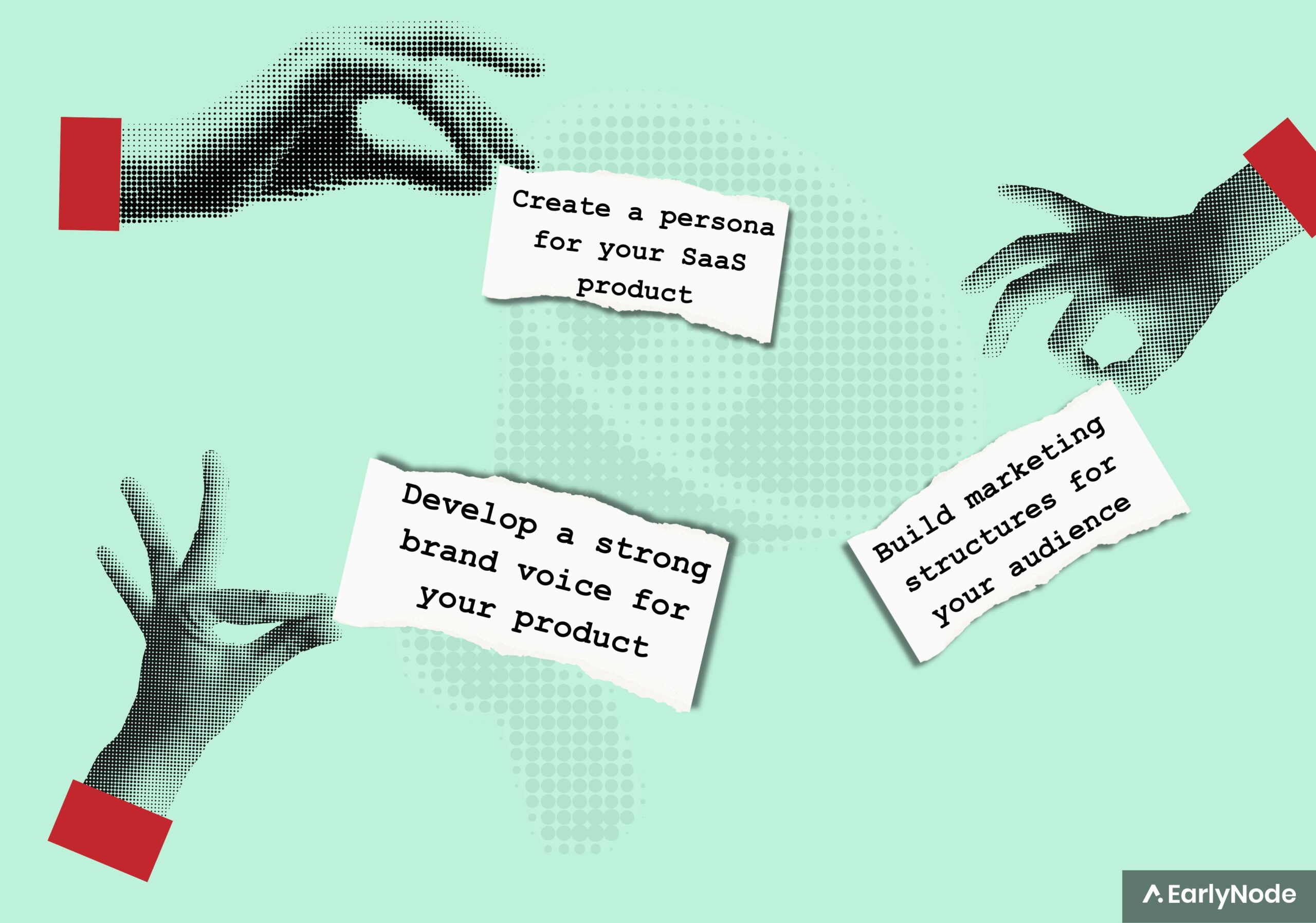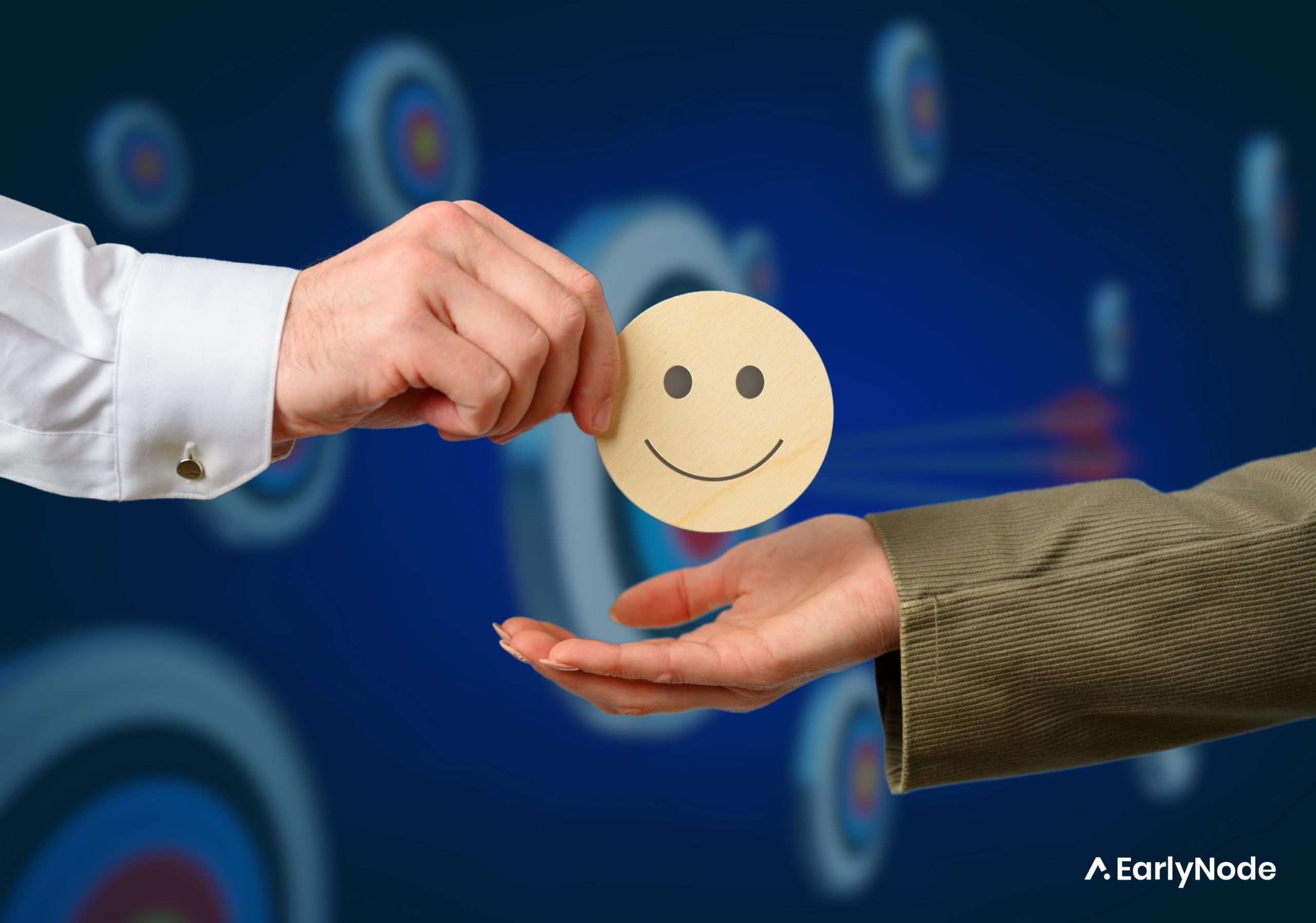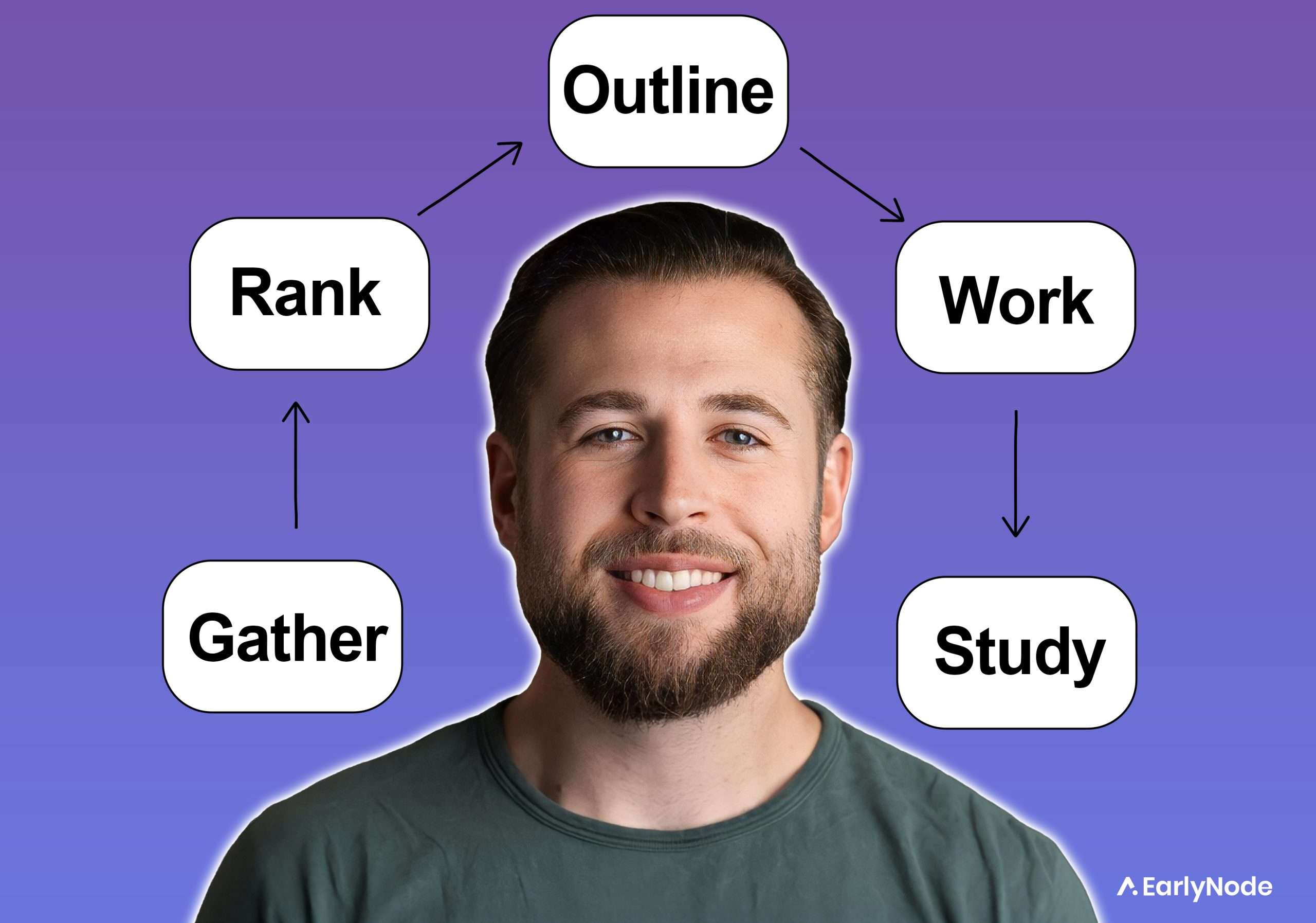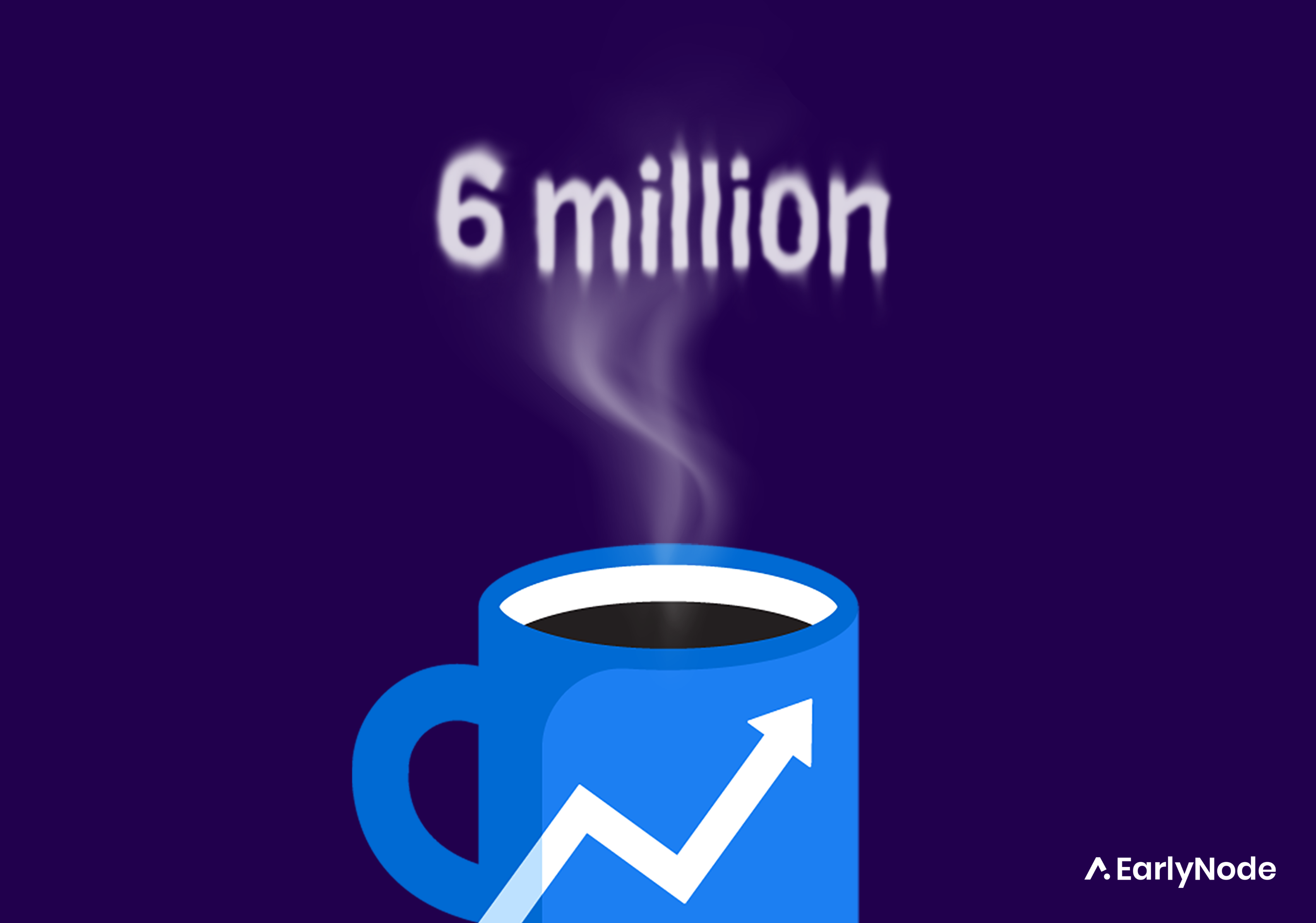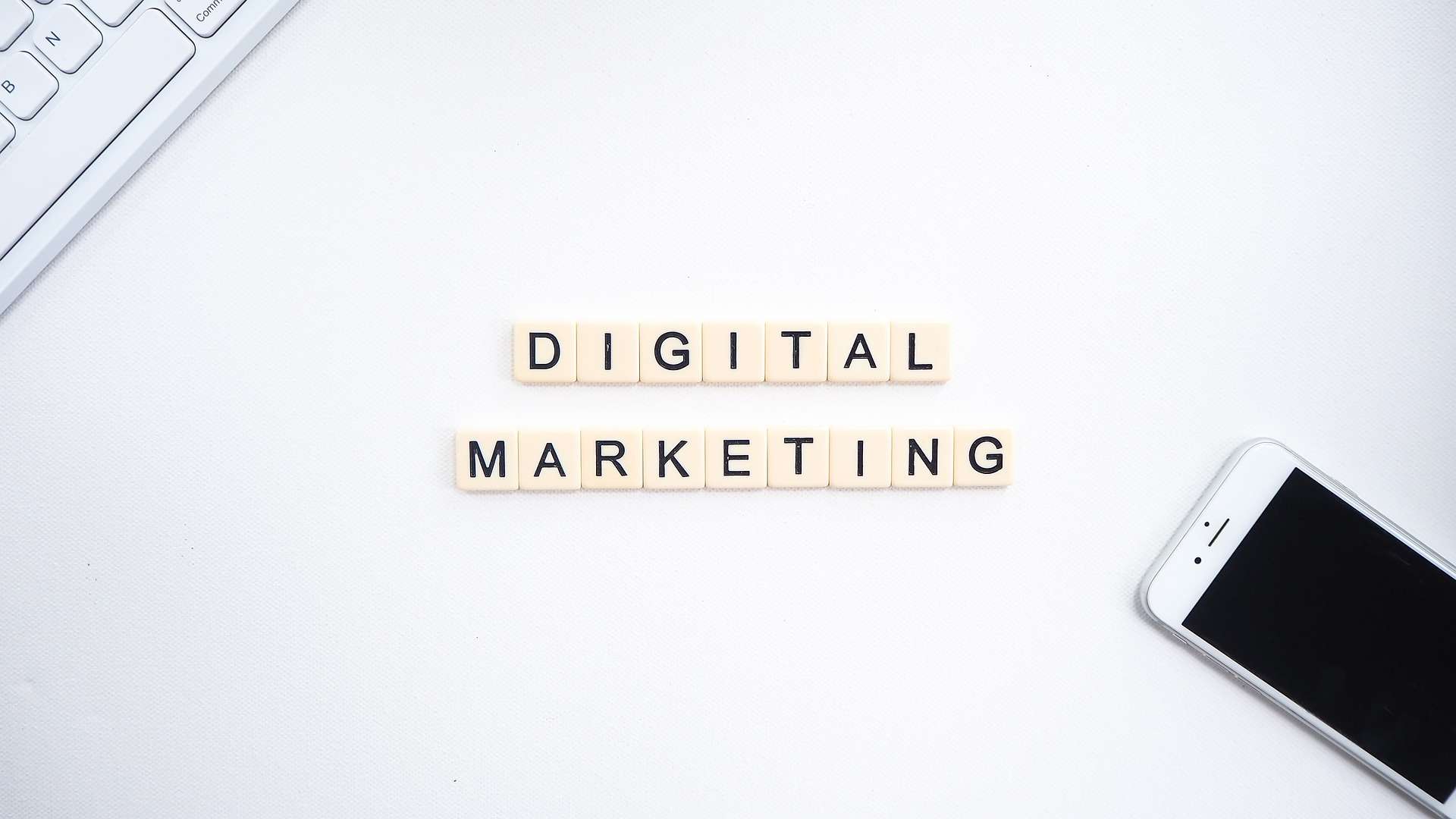How to Create a SaaS Inbound Marketing Strategy in 3 Steps
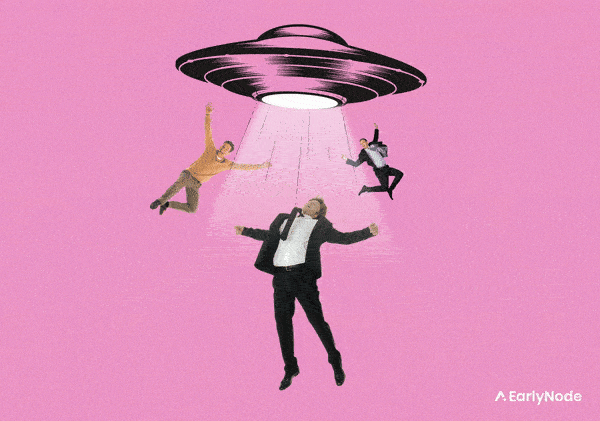
SaaS inbound marketing works like a horseshoe magnet. It attracts qualified leads to your business. Powerful as it is, this funnel not only draws potential customers but also aligns them with your product’s core values, transforming their curiosity into commitment. Let’s dive into how you can leverage this magnetic pull to create a thriving customer base.
TL;DR
- Inbound marketing attracts qualified leads by providing valuable content that pulls them toward your brand, unlike interrupting them with ads.
- Adopt the 3-step process to create a SaaS inbound marketing strategy.
Step 1: Map out the typical buyer’s journey for your target customers, usually: Awareness ⇒ Interest ⇒ Consideration ⇒ Decision
Step 2: Create content that matches each buyer stage, starting with more educational top-of-funnel content, then more product-focused content down the funnel.
Step 3: Build an “inbound flywheel” to continue nurturing customers post-sale by improving automation and iteration based on metrics and feedback.
- SaaS companies like HubSpot and Shopify show how optimized inbound marketing fuels efficient growth for SaaS businesses with both product-led and sales-led models.
How SaaS Inbound Marketing Works
Inbound marketing flips the old-school “interruption marketing” model on its head. Instead of blasting your ads at people who are not ready to buy, you create valuable content and experiences that pull potential customers toward your brand.
It’s like a horseshoe magnet attracting iron filings. Each piece of content is a mini magnet, slowly drawing leads closer to becoming customers. Your blog posts, ebooks, webinars, and other goodies bring people into your orbit. They start following your socials, signing up for your newsletter, and interacting with your sales team.
Before you know it, these strangers are fans of your brand. And when they’re ready to buy the type of product you sell, you’re top of mind. Inbound delivers leads that convert at higher rates compared to ads or cold calls. The key is mapping your content to the customer’s journey. Meet them where they are with relevant info. They need more top-of-funnel content like guides and webinars to raise awareness early on.
Further down, case studies and free trials convert leads into delighted users. It’s a flywheel effect—optimize content, get more leads and sales, and use that revenue to improve the customer experience, which spins the flywheel faster. So, rather than pushing your message out, you pull potential customers in by being helpful.
Inbound marketing brings suitable leads to you and converts them into long-term brand champions. So, how do you create an inbound flywheel for your business?
How to Create a SaaS Inbound Marketing Strategy
Cooking up an inbound recipe involves defining your customer journey, mapping content to each stage, and creating a flywheel. Let’s walk through these three steps to building a rock-solid inbound strategy for your SaaS business.
Step 1: Define Your Buyer’s Journey
Your potential customers go on a journey before they’re ready to purchase. The first step is mapping out that journey so you can meet their needs at each stage.
Let’s work with a practical example. Assume you have built ACME Scheduling — a SaaS meeting scheduling app for teams — and want to define your buyer’s journey for this product. Here are the different stages of discovery at which you might meet your target customers as you begin to map out your content strategy.
Awareness
They realize they have a problem they need to solve. So, they start googling and asking around about possible solutions.
This stage also applies to problem-unaware customers who are used to a particular way of getting something done and might not know that they have a problem that your solution provides.
Start by figuring out what questions your customers are trying to get answers to.
What they are searching for:
“how to avoid back-and-forth emails when scheduling meetings” — problem-aware buyers
“how to automate my meeting appointments” — problem-aware buyers
“how to schedule meetings over email” — problem-unaware buyers
“quicker way to set up meetings via email” — problem-unaware buyers
The mistake SaaS businesses make: Trying to be the encyclopedia for all topics that remotely concern their product.
Do it right: As a rule of thumb, create content on topics that help your target buyers inch closer to your product or create awareness for problem-unaware leads. Plug your product into how it solves that problem for your customers. This lets you position your brand as a specialist in delivering high-value solutions to defined use cases.
Interest
At the interest stage, potential customers will have clearly defined and given a name to their problem.
What they are searching for:
“best online appointment scheduling software” — they’ve identified their problem (manual meeting scheduling with team members is inefficient), now they want to know the best options in the market.
“which meeting scheduling software is easy to set up” — as an example, this might be a criterion for searching for buyers who don’t want to use apps with complex setup processes, so they begin to narrow down their options from here.
Tip: Conduct keyword research throughout this stage to find out what deciding factors, features, and benefits your users care about. Then, create content highlighting areas where your product matches their expectations.
Do it right: Create more nurture content for customers at this stage. Like product description articles, FAQs, and how-to-use videos.
Consideration
This is where the competition gets fiercer. At this stage, your potential customers are trying to learn more about the different solutions (including your competitors) and methods to solve their problems.
What they are searching for:
“ACME Scheduling Vs Calendly” — your potential buyers are evaluating your product against other alternatives to make their decision.
“ACME Scheduling Vs Google Calendar”
“ACME Scheduling reviews”
Do it right: Lead with your most unique solution. Upsell only after you’ve ascertained your user enjoys using your product.
Decision
At this stage, your potential customers have compiled a list of the solutions, strategies, or solutions they want to try and ultimately make a purchase decision.
What they are searching for:
“setting up ACME Scheduling for my team” — at this discovery stage, your potential buyers are aware of your scheduling app; they are now looking for tipping points to buy your product. For example, does ACME Scheduling have a more straightforward setup? Is it cheaper?
“ACME Scheduling onboarding and implementation”
Do it right: Create more competitive content at this stage to make it easier for decision-makers to select your product. Additionally, B2B SaaS businesses typically need layers of personas to convince. At this stage, ensure you’re focusing on the decision maker; create more content that helps the user persona pitch your product to these decision-makers.
Pro tip: Define the buyer journey for all the target personas you might have and determine the type of content you’re sending at each level. For instance, if your SaaS product targets three personas, create a separate content map for all three personas.
Step 2: Map Content to Each Buyer Stage
As your buyers move through the marketing funnel, it becomes essential to specify the content you’re using to attract them on their journey. While defining your buyer’s stages might be a walk in the park for you, mapping the right content to meet different customers is not as easy; this might knock you off your perch.
We will hold your hands while we create an inbound content map for another fictional SaaS business: a simple B2B social media content scheduling app. This time, let’s call it “Pied Piper.” Our target persona is a junior social media executive who manages multiple social media accounts for a tech firm. This content map aims to show this target audience how Pied Piper integrates with their activities and goals as a social media executive and get them to advocate our product to decision-makers.
Here’s how to create an inbound content map for our target audience.
TOFU — Top of Funnel (Awareness Phase)
Your audience is unaware of your product and might even be unaware that social media scheduling tools exist. So, you need to create content that helps them solve related problems that they have.
Campaign: “Save time posting on social media. Put your content on autopilot and focus on marketing aspects that matter to business growth.”
Content theme: Create content that addresses the hassle of manually managing social media. Highlight the activity disruption problems posting manually on social media might cause (that’s a good selling point).
Content format: How-to blog articles, social media posts, ebooks, social media kits, and educational videos.
MOFU — Middle of Funnel (Interest and Consideration Phases)
Your audience is problem-aware now and considering your product against other alternatives. A good idea here is to sell them an experience. Do not just focus on what Pied Piper does for your target audience, but what they can be or achieve from using it.
Campaign: “Hit your social media and personal KPI goals when you plan your content using Pied Piper and supercharge your social media career to the next level.”
Content theme: Create more content around your product’s key features and tie it to what your target audience badly wants to achieve. Also, leverage creating adjoining content that shows the target persona how to use your product to address the hassle they face. Importantly, highlight why you beat other available options.
Content format: More detailed content like comparison guides, free product samples, and case studies.
BOFU — Bottom of Funnel (Decision Phase)
When creating content for conversion, focus on proof points. Aim to answer your audience’s questions, like: Why is Pied Piper better for my team? How have other teams been using Pied Piper? What did they achieve with it?
Campaign: “Lean teams that use Pied Piper get more leads and close more deals because they free up more time from manually managing their social media accounts. On average, that is a 10% month-over-month (MoM) increase in revenue and +2% customer lifetime value from customers who are happy with these hyper-responsive businesses.”
Content theme: The content at this stage focuses on spelling out the benefits of Pied Piper to companies that adopt it. This also appeals to decision-makers who always need to justify their purchases.
Content format: Create free trials, custom slide decks tailored to company and team structure, offer consultations with sales reps, and custom quotes.
Remember, adopting a storyline when you create your mapped content makes it more compelling. At every stage of the customer journey, potential buyers struggle to connect your product and their solution. You can create a storyline with your content to help them understand areas they need help.
The framework is simple. Always adopt:
- A hero (your customers)
- A villain (their biggest problem at each stage of their journey)
- The hero’s motivation
And with each content mapped to the customer, ask yourself the biggest question they’re having at that moment and try to answer them.
Step 3: Create an Inbound Flywheel
The flywheel kicks in pre-conversion and keeps customers engaged post-conversion. The goal is to improve the customer experience using your product through content continuously.
Here’s how:
Automation
Automation involves all the content you create to keep your users engaged and drive them deeper into your product. At pre-conversion stage, use popup forms, web push notifications, email nurturing, and chatbots to engage visitors.
Post-conversion, set up workflows to onboard customers, provide self-service support, highlight product features, and encourage referrals. The goal of automation is to continuously guide both prospects and customers towards ideal behaviors at scale.
Pre-conversion automation focuses on converting new leads by:
- Sending targeted content offers through popups and web push alerts
- Nurturing cold leads via drip email campaigns
- Answering common questions 24/7 via chatbots
Post-conversion, shift to customer success automation:
- Send in-app messages guiding new users through onboarding
- Set up engagement triggers like email alerts when key features aren’t used
- Create self-help documentation and discussion forums
Proper automation improves conversion rates pre-sale and expands lifetime value post-purchase. It fuels the flywheel momentum.
Iteration
Use data to spot bottlenecks and opportunities. A great way to do this is to set up custom triggers and product analytics to track when certain activities happen.
Let’s look at another example. For instance, if you’ve created a demo video for your product’s users to learn how to use a feature, then an ideal thing to do is to create a tracking path to see how helpful that content is.
As an instance for this trigger, you can track views over feature adoption.
That is:
# of viewers who adopted feature X / # of demo video views
This would tell you that for every view of your demo video explaining Feature X, y% of users adopted that feature.
So if 5000 users adopt a new feature you launched for your SaaS, and you create a walkthrough demo video for it that has 7,000 views. This means that 71% of the video viewers likely adopted that feature.
This will give you a representation of how users take action after watching your video. If you want to specify things, you can monitor the pathway your customers follow before adopting that feature; if they’ve come after watching the demo video you created, your video may be compelling.
If your demo video is a critical component for this feature’s adoption, you can learn how to iterate and drive more adoption from data. With this knowledge, you can double down on what works and improve weak points. Ultimately, use post-conversion inbound content to improve your users’ experience.
SaaS Inbound Marketing Examples
Let’s look at SaaS inbound marketing in action with two examples: HubSpot and Spotify.
HubSpot
HubSpot’s blog offers tailored educational content for every funnel stage. For top-of-the-funnel, they create several blog posts and articles highlighting several problems in their industries and offering instant solutions. HubSpot’s MOFU assets include free tools and templates for creating personas or email campaigns. Webinars and product walkthroughs nurture leads closer to the bottom.
Free trials of HubSpot software convert MOFU leads into customers. Then, the flywheel kicks in—drip campaigns for onboarding, surveys for feedback, new content offers, and more. HubSpot also incorporates sales motions into the inbound model. Sales development reps connect with high-value leads to advise and shorten the sales cycle.
The results speak for themselves. HubSpot’s blog generates over 3 million monthly views. And they’ve topped $1 billion in ARR since their initial public offering (IPO).
For any SaaS, HubSpot shows how optimized inbound marketing fuels scalable growth—their blueprint works for product- and sales-led go-to-market models.
Shopify
Shopify also leverages inbound marketing to create e-commerce content targeted at entrepreneurs and people who want to start a small business. Shopify’s content hub offers guides, webinars, blogs, podcasts, and more for each funnel stage.
⇒ At TOFU level, Shopify creates problem-aware content about starting and scaling an e-commerce business.
⇒ At MOFU level, Shopify uses blogs and YouTube videos to nurture leads (Interest) and share success stories of their users (Consideration), respectively.
⇒ At BOFU level, Shopify creates implementation guides throughout their blog to convert leads into customers.
The flywheel then retains them with drip campaigns, new feature announcements, product guides (for customers that might run into any trouble using Shopify), as well as their occasional special offers.
Shopify balances both product-led and sales-led motions in their strategy. Easy app trial signup focuses on the product experience. But their sales team also provides high-touch support to convert and retain high-value merchants.
The results?
Shopify powers over 4 million e-commerce businesses and does $6.651 billion in annual recurring revenue.
The combined impact of a well-crafted SaaS inbound marketing strategy is efficient growth. Whether product-led or sales-led, inbound marketing works to cost-effectively scale your SaaS revenue. Map your content to the user journey, focus on optimization, and track key metrics. Then, watch your flywheel accelerate as inbound leads become happy, engaged customers.
Subscribe to EarlyNode’s newsletter for more insights on SaaS marketing, collated from SaaS veterans around the world.
